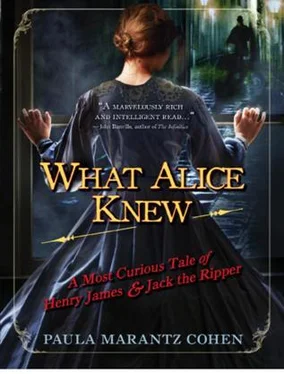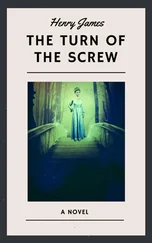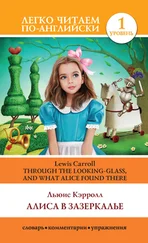Abberline nodded. “Possibly a case of severed or maimed organs on the part of the killer.”
“Perhaps,” mused William, “but my sense is that he would not commit these acts unless some additional expressive route were inhibited or blocked. The form of the killings is indicative of more than sexual frustration. Or sexual frustration instigated by something else.”
He gazed down at the photograph of Catherine Eddowes, with its grotesque flaps of skin, and thought of the stitched image he had seen in the morgue. Somehow the photograph was even more disturbing than the actual body. It was not a sharp image, yet the graininess contributed to the horror of its effect. He was reminded of the mourning photograph taken of his son Hermie before the burial, a carefully staged shot of his little boy tucked into bed, just as he might have been after he had been kissed good night. That picture, meant to be a beautiful keepsake, had given William terrible dreams, and his Alice had finally hidden it, for fear that it would precipitate another breakdown.
A photograph was a kind of haunting, he concluded, a representation of a reality not literally present. And the photograph of a dead person was a double sort of haunting. As for these murdered women, their photographs were also testimony of their society’s neglect and abuse. Strangers would look at them years, perhaps even decades, hence and be haunted by them. It was a grotesque sort of immortality.
He was flipping back through the pictures, musing about these things, when a young officer entered the room, walked quickly over to Abberline, and whispered in his ear.
The inspector’s face grew taut as he rose quickly from the table. “There’s been another murder…or at least, the suspicion of one. I try not jump to conclusions, but it’s imperative to investigate. You’re free to come along.”
He was already halfway out the door before William grabbed his hat from the hook and followed rapidly on his heels.
The two men arrived by police carriage at the corner of Hanberry and Latham streets and descended with their destination still a block away. A large crowd had gathered in the vicinity, drawn by the rumor that another Ripper murder had taken place, and Abberline decided it would be faster to get to the scene on foot. While the inspector, whom the officers recognized, was ushered quickly to the front, William was left behind to make his way forward alone. As he moved through the crowd, he saw that a number of policemen were pushing people back in a brutal, unthinking manner. It struck him as an example of the psychological dimness that operated on so many levels in governance and that, left unchecked, could incite revolutions.
He explained his presence to one of the policemen, who took him by the elbow and led him through the crush of onlookers. There were catcalls of “Who’s the fine gent?” and “What’s he seeing Jenny for, when us who knew her can’t get a glimpse o’ the poor girl?” He finally made his way to the front, where a phalanx of policemen were attempting to shield the view in front of the alley where the body had been found, kicking away the smaller children who were attempting to peek through their legs. William’s escort said a few words to one of these sentinels, and an opening was provided for him to slip through.
He had already been shocked at the sight of Catherine Eddowes’s stitched body and of the grotesque photographs that Abberline had shown him of all the victims, but what greeted him now was more deeply moving. It was death in its most profoundly immediate form. The chief inspector was standing with two officers, along with a white-smocked gentleman whom William assumed to be the medical examiner. They stood around the body of a young woman lying on the pavement near the alley, behind a row of tenements. One of the woman’s legs was extended, the other leg bent. One arm lay near her body; the other was outstretched, the palm open. The posture was oddly graceful, almost balletic, and the effect was enhanced by the appearance of the face pressed to the pavement in profile. The dead woman could not have been more than thirty years old, with finely etched features and an abundance of auburn hair that lay spread like a luxurious drape to one side of her head. But what gave the image its most compelling aspect was that around the head and merging with the thick hair was an almost perfect circle of blood. There was no indication that the clothes had been disarranged or ripped, and from the angle at which the face lay, it looked entirely unblemished. William assumed that the woman’s throat had been cut on the side on which she was lying, so that all one saw was the roseate halo of blood. She might very well have been a rather plain sort of person in life, but in death, laid out in this dramatic pose, there was something breathtakingly beautiful about her.
As he gazed at the body, he noticed that the outstretched arm was turned up, exposing a thick scar on the wrist above where the delicate fingers lay unclasped.
He approached Abberline, who was standing with the physician over the body.
“Sorry to have brought you out for this,” said Abberline. “One of my men heard her throat was cut and assumed we had another Ripper murder on our hands. I encourage them not to make assumptions, but it’s difficult, given the climate at the moment.”
William looked down at the body again. “What happened to her?” he asked.
“Suicide,” said Abberline succinctly.
“How do you know?”
“All the standard indicators: the disposition of the body, the knife found there.” Abberline pointed to a spot where a mark had been made on the ground. Nearby, one of the officers was holding what looked like a medium-sized kitchen knife wrapped in a rag. “And of course, she’s tried it before.” He motioned to the scar on the woman’s wrist.
“I see all that. But the method seems so unusual.”
“Not really, among these people, sadly enough,” noted Abberline, “though it’s more the women who do it. The men drink themselves into a stupor and stumble under a carriage or fall off a bridge, but the women tend to be more efficient. It’s a gruesome death, and it takes a sort of nerve. One almost has to admire them for it.”
“But why did she do it?”
“Why? Not hard to find an answer to that. Because life got too hard, too much poverty and hopelessness. Look at the neighborhood. They say she wouldn’t bring herself to do what so many of the others do—sell herself to live. So this is what comes of it. It’s a sad state of affairs that when they can live by their bodies, they die at the hands of a lunatic killer, and when they can’t, they die by their own hands.”
The wagon had arrived to take the corpse to the mortuary, and several of the officers turned the body over. A kerchief was placed around her neck to hide the wound, and the woman was moved gingerly onto the cart. Something about her ethereal beauty inspired reverence and caused even the coarse officers to handle her gently and arrange her clothing carefully around her.
Several onlookers were speaking to Abberline, explaining that the woman, Jenny Stoddard was her name, was a ladylike sort of person, but too sad for this world. “There was the death of the first child,” said one large matron with a gruff but not unkind manner. “She cried for months—too long to mourn a child. Then, when another came, we thought she’d rally, but she didn’t. If anything, it made her worse, reminded her of the other one she’d lost. She did what she could for him at first, but her heart wasn’t in it, and then she just stopped caring. The husband wasn’t a bad sort, but he had no patience for her weeping. He took off. After that, she tried to do away with herself, but her boy found her, and they patched her up. But now, she done it, and it’s just as well. He won’t be no worse off with her gone than he was with her here, poor soul.”
Читать дальше












